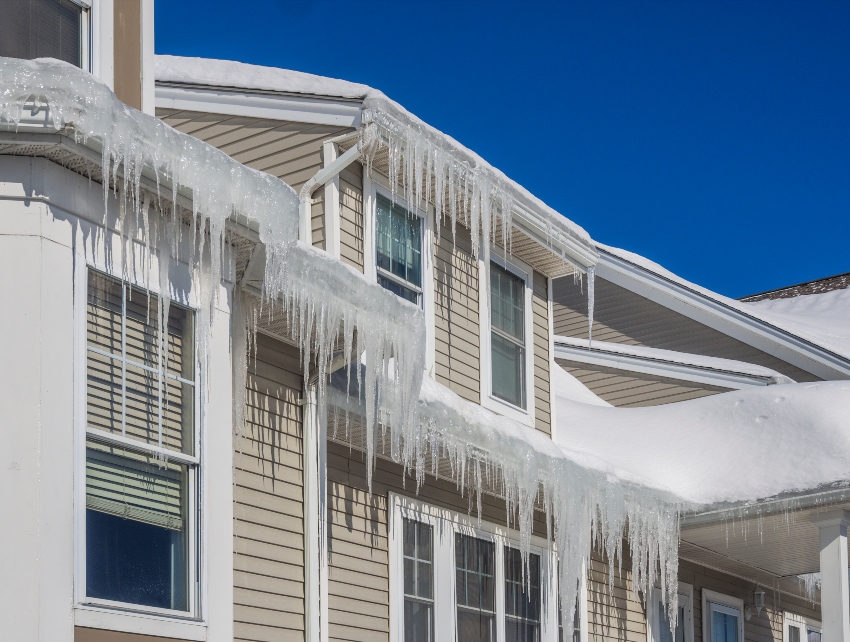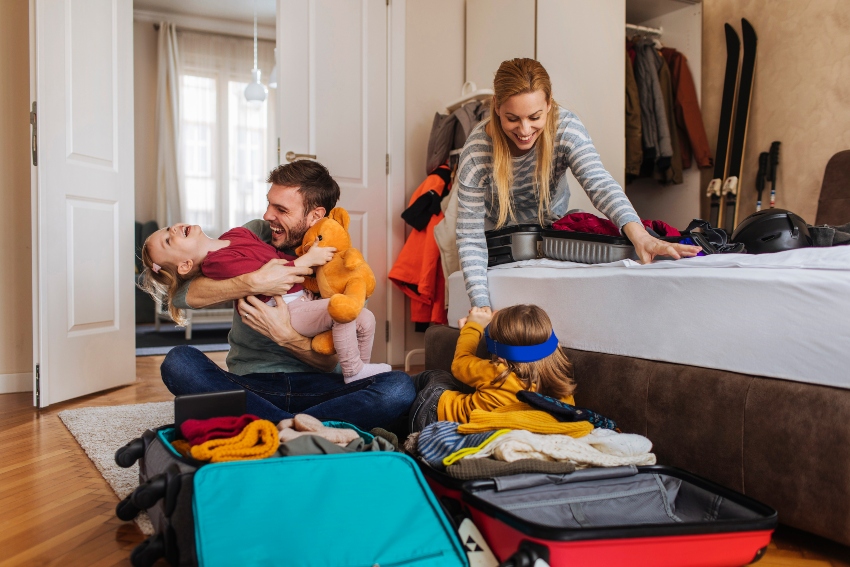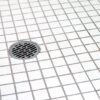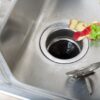Category: Winter Plumbing

6 Winter Plumbing Issues You Shouldn’t Ignore
Minnesota’s extreme winter weather puts extra stress on plumbing systems. With the holiday season, winter vacations, and other distractions, it’s easy to overlook warning signs that seem to be minor inconveniences. However, these small annoyances may indicate bigger problems that can lead to serious damage and costly repairs if left unaddressed. Here are six winter plumbing issues you shouldn’t ignore.
Snow and Ice Buildup on the Roof
Roofs are built to face and protect our homes from mother nature, but they’re not indestructible. Year-round exposure to the elements takes its toll on your roof, and excessive snow and ice buildup increases the risk of damage and even collapse. Signs your roof is under too much stress and needs snow and/or ice removed include:
- Creaks, pops, and other unusual noises coming from the roof or attic
- Water stains, bubbling, and other signs of an active leak on walls and/or ceilings near roof
- Ridges of roof that seem to be sagging
- Area(s) of roof appearing to bend inward
Staying ahead of buildup is the best way to prevent issues. Remember to clear your roof off after the first heavy snowfall and continue doing so throughout the season. However, if you notice any of these warning signs during winter, it’s recommended to contact a professional roofing contractor ASAP for snow/ice removal. They will have the proper equipment, training, and experience to do so safely and correctly.
Slow or Clogged Drains
Clogged drains can happen any time of year as soap scum, hair, food particles, and other debris collect in the pipes. However, the bitter cold and harsh winds of winter can stiffen and solidify these blockages, as well as combine them with frozen water to completely clog a drain. Keeping drains clear, especially in bathrooms and kitchens with pipes located in exterior walls, so water can easily pass through will help prevent freezing.
If you encounter a clog in winter, try using boiling water to thaw the obstruction. If the problem persists, contact your local drain cleaning specialists to properly diagnose and fix the issue. Remember that you shouldn’t use chemical solutions as they can eat away at your pipes and do more harm than good.
Leaking or Slow-Draining Garbage Disposal
Leaking, slow-draining, and clogged garbage disposals are pretty common and usually a pretty easy fix. However, if left for too long, they can lead to larger problems that require a full replacement or cause expensive water damage.
Leaky Garbage Disposal
- Due to natural wear-and-tear over time, leaks commonly develop in several areas of the disposal:
- Sink flange: uppermost area of the disposal, which goes through the sink
- Gasket: top rim of the disposal, where the rubber seal mounts to the flange
- Dishwasher connection: rubber hose that carries wastewater from the dishwasher to the disposal
- Discharge drainpipe: plastic pipe that carries wastewater from the disposal to the sink’s drain trap
If you notice any of these issues, contact your local plumber now before the problem gets worse. Fixing these leaks typically requires replacement of an old, worn part and can save you the time, hassle, and cost of a more expensive repair or replacement down the road.
Slow-draining or Clogged Garbage Disposal
Don’t make the mistake of thinking your garbage disposal is indestructible. Food, grease, and other obstructions can collect in your garbage disposal over time and cause slow draining or even a wastewater backup. Fixing this issue usually requires cutting power to the disposal, disassembling the drain trap and discharge pipe, and clearing out any blockages. If you notice drainage issues and want help, call the drain cleaning experts at Robillard.
Especially around the holiday season, it’s important to remember that disposals are meant to grind and drain scraps of food, not entire plates or meals. You should dispose of food waste in the trash before washing dishes, and never put coffee grounds or eggshells down the garbage disposal.
Water Temperature Issues
With colder water being delivered to your water heater in winter, the system works even harder to keep up with the hot water demands of the household. The extra stress increases the risk of failure, so keep an eye out for these water heater warning signs:
- Not having enough hot water for daily use (i.e. showers, laundry, dishes, etc.)
- Frequent and sudden changes in water temperature
- Water dripping from and/or pooling around water heater
- Loud cracks, pops, gurgling/boiling, and other unusual noises coming from water tank
- Smelly or discolored water (i.e. rusty tints)
Don’t suffer through cold showers or stinky, dirty water, especially as these could possibly point to larger issues with your source water. Trust the master plumbers at Robillard to identify and correct the problem so your family can enjoy warm, clean water throughout the home.
Weak Water Pressure
Decreased water pressure is a pain at any time of year, and during winter, this can be a sign of a frozen pipe somewhere in the system. Again, pipes in your exterior walls are more susceptible as they have less insulation and more exposure to the cold outdoor air and windy weather. Address the problem immediately before you’re left with a burst pipe and expensive water damage.
Weak water pressure can also be caused by an issue with your water softener, such as a clog in the sediment filter or resin bed or a leak. If you’re experiencing water pressure issues, call Robillard today and one of our plumbing experts will diagnose and fix the issue ASAP.
Unexplained Water Bill Spikes
An unjustified spike in your water bill is an unpleasant and costly surprise indicating a problematic change in your plumbing system. Using humidifiers is common in the winter, so remember that running them 24/7 will naturally increase your costs. A bill being much higher than expected could indicate a burst pipe, but the issue can usually be traced to something smaller like a leaking or running toilet or a water softener leak.
Winter brings its own unique challenges to our daily lives as well as our home’s utility systems. There’s no way to guarantee a problem-free season but knowing what to look for can help prevent major complications. Keep an eye out for these common winter plumbing issues to catch minor troubles before they become big, costly problems later on.
The master plumbers at Robillard Plumbing have proudly served customers throughout the northwest Twin Cities area since 1986. We take pride in providing efficient, effective plumbing services with a focus on reliability and customer care. Contact us to learn more.
Read More
Plumbing Checklist for Winter Trips and Snowbirds
We all know how unbearable Minnesota winters can be, and the bitter cold and harsh weather place extra stress on our plumbing systems as well. If you’re planning an extended getaway this season, use this plumbing checklist for winter trips and snowbirding to help prevent disaster while you’re gone.
Shut Off Main Water Valve and Drain Remaining Water
Flooding and expensive water damage from a burst pipe is typically the biggest concern for homeowners leaving their house vacant in the winter. To prevent this, first locate and shut off the main water valve. Then, turn on all the faucets around the house to drain all water from the pipes. Leave them open until you return home.
Set the Thermostat and Open Cabinets and Closets
Extreme cold is no stranger in our state. Many homeowners try to save money in the winter by lowering the thermostat, but remember that the risk of frozen pipes in exterior walls gets higher as the setting gets lower. If you’ll be gone for an extended period of time, it’s recommended to set the thermostat no lower than 55 degrees.
Additionally, you should open cabinet and closet doors so warm air can reach hidden pipes. If you’re a snowbird leaving the home vacant all season long, consider insulating exposed pipes for additional protection, especially if you decide not to run your HVAC system while you’re away.
Protect Outdoor Plumbing
It can be easy to forget about outdoor plumbing during winter but prepping it for the harsh weather is crucial when you’ll be away. After you disconnect, drain, and store all hoses for the year, close the shut-off valve. This may be separate from the main valve for outdoor spigots, faucets, etc. Drain the lines and leave them open. If you have an outdoor faucet with a back-flow prevention device, make sure it’s disconnected so the water line drains.
Prepare Your Sump Pump
Don’t neglect your sump pump and come home to a wet basement. Clear out any debris in the sump pit to help prevent clogs. Keep the pump plugged in but be sure to remove the discharge hose to prevent freezing during the winter. Make plans with a friend or family member who can reattach it for you should a warm front or rainstorm come through while you’re away (especially if there’s a chance you’ll still be away when the spring thaw begins). As an added safeguard, consider having a battery backup and extra discharge hose handy in case there’s a power outage or other emergency.
Seal Off Your Crawl Space
Crawl spaces typically provide access to electrical, plumbing, ventilation, and gas line hook-ups beneath homes without basements or concrete foundations. Freezing cold winter air enters via open vents and air leaks and increases the risk of frozen pipes, decreases heating efficiency of the home, and rapidly cools the floors above. If you have a crawl space, cover vents with custom-cut cardboard and duct tape and use caulk to seal any leaks you find.
Seal Cracks and Seams on Exterior Walls
Cold outdoor air can also sneak into the home through cracks in the exterior or foundation. Check around your house and seal any potential leaks with caulk to help protect against frozen pipes. Pay extra attention to surfaces near windows and doors. Also, double-check that all windows and doors are shut AND locked to ensure a tight seal.
Ensure Gutters and Drainage Routes are Clear
Make sure water from melted snow or surprise rainfall can be safely guided away from the home. Double-check that your gutters and drain spouts are secure, in good working condition, and clear of clogs and debris.
Make Plans for Monitoring
Once you’ve done all your preparation, don’t just hope everything goes to plan. Consider talking to your local plumber about remote monitoring systems for safety and peace of mind. Notify close friends, family, and neighbors that you’ll be away so they can keep an eye out for any trouble. If you’re comfortable doing so, it’s a good idea to give someone you trust a spare key so they can check on the home, update you regularly, and help in case of an emergency.
‘Tis the season of shorter days, holiday arrangements, and bitter cold. Around here, we know winter can be a mixed bag of good and bad. And for many of us, a getaway to someplace warm gets us through it. Just remember to prepare! Use this plumbing checklist for winter trips to help keep your home protected until you return.
Need help prepping your home for winter? The master plumbers at Robillard Plumbing are here for all your plumbing service and product needs. Contact us to learn more.
Read More


